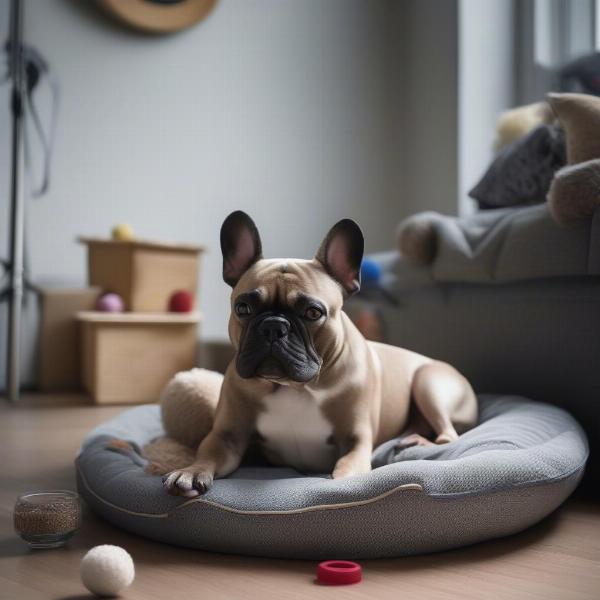Model dogs are more than just pretty faces; they are canine ambassadors showcasing the beauty and diversity of different breeds. Whether gracing the pages of magazines, strutting their stuff on the runway, or starring in commercials, these talented pups capture our hearts and inspire us with their charm. This guide will delve into the world of model dogs, exploring what it takes to become one, the responsibilities involved, and the ethical considerations surrounding this unique profession.
What Makes a Model Dog?
Not every dog is cut out for the spotlight. While good looks are certainly an advantage, temperament and trainability are equally crucial. A model dog needs to be comfortable in front of the camera, patient during long shoots, and responsive to commands. They must also be adaptable to different environments and able to interact calmly with strangers and other animals.
Temperament and Trainability
A calm and even-tempered dog is essential for a successful modeling career. They need to be able to handle the hustle and bustle of a photoshoot without becoming stressed or anxious. Basic obedience training is a must, allowing the dog to follow directions and pose as required.
Physical Attributes
While breed standards often play a role, there’s no single “ideal” look for a model dog. Different projects require different types of dogs, from the sleek elegance of a Greyhound to the cuddly charm of a Pomeranian. A healthy coat, good teeth, and bright eyes are generally considered desirable traits.
The Life of a Model Dog
Being a model dog isn’t all glamour and treats. It involves a significant time commitment from both the dog and their owner. Regular grooming is essential to maintain a pristine appearance, and training sessions are crucial for honing the dog’s skills.
Training and Preparation
Training for a model dog often involves advanced obedience, trick training, and even agility. The dog needs to be able to perform specific actions on cue, such as staying still, making eye contact, and interacting with props.
On Set Etiquette
On set, the dog’s well-being is paramount. Regular breaks, access to water, and a comfortable resting area are essential. The owner or handler plays a crucial role in ensuring the dog remains calm and happy throughout the shoot.
Ethical Considerations
The welfare of the animal should always be the top priority. Avoid forcing a dog into modeling if they show signs of stress or discomfort. Reputable agencies and brands prioritize ethical treatment and ensure the dog’s safety and well-being throughout the process.
 A model dog taking a break during a photoshoot.
A model dog taking a break during a photoshoot.
Conclusion
Model dogs represent the best of the canine world, showcasing their intelligence, beauty, and trainability. While the life of a model dog can be rewarding, it’s crucial to prioritize the animal’s well-being and ensure ethical practices are followed. If you’re considering this path for your furry friend, remember that patience, training, and a love for the spotlight are key ingredients for success.
FAQ
- How do I get my dog into modeling? Start by contacting reputable pet talent agencies and building a strong portfolio of professional photographs.
- What age can a dog start modeling? Puppies can start as early as a few months old, but it depends on their temperament and the specific project.
- Is modeling stressful for dogs? It can be if not managed properly. Regular breaks, positive reinforcement, and a comfortable environment are crucial.
- How much do model dogs earn? Earnings vary depending on the project and the dog’s experience.
- What are the risks involved in dog modeling? Potential risks include stress, injury, and exploitation if not handled by reputable professionals.
- What kind of training is required for model dogs? Obedience, trick training, and socialization are essential.
- How do I find a reputable pet talent agency? Research online, ask for recommendations from other dog owners, and ensure the agency prioritizes animal welfare.
ILM Dog is your go-to resource for expert advice on all things dog-related. From breed selection and healthcare to training and nutrition, we offer comprehensive guides and valuable insights to help you provide the best possible care for your canine companion. Whether you’re a seasoned dog owner or just starting out, ILM Dog is dedicated to supporting you every step of the way. Contact us today for personalized guidance: Email: [email protected], Phone: +44 20-3965-8624. Visit ILM Dog for more information.